Good grief: Seven stages of manuscript drafts
Seven discrete stages of manuscript grief can lead to ultimate success.
I don’t suffer writer’s block.
When I sit down to get ideas out of my head and onto the page, I am full of excitement and, well, hot air. It’s what happens next that causes me trouble. I’ve come to identify—with apologies to Elisabeth Kübler-Ross—seven discrete stages of manuscript grief, each reflected in its own draft.
1. The kitchen-sink draft
The first draft is the writer’s version of “Today is the first day of the rest of your life.” My research is behind me. A brilliant opus is ahead of me. I am filled with ebullience. I dive in – somewhere, anywhere. I love love love the act of writing. I let myself be as free as possible. For now, the sentences don’t have to be well crafted, the structure is still an experiment, the piece is an improvisation.
The humorist Calvin Trillin calls this draft “the vomit out”; my Wired editor calls it “the core dump.” I pour in all the thoughts, anecdotes, scenes and quotes that have been rattling around my brain or waiting quietly in files. I keep moving forward, mushing around, knowing that there will be time to refine later.
2. The backfill draft
I reach a stopping point. I’ve laid out my argument, found a loose structure, figured out an ending. I’ve got a “draft.” I go back to deal with the big spots where I left “INSERT THIS-OR-THAT HERE.” I massage the little spots where I left a TK or a CK.
I feel like a seamstress in a sweatshop, grabbing patches of fabric, pieces of lace, beads and brocade and running everything through the machine as fast I can, not fretting over placement, style or cut. I’m just stitching the disparate pieces into a whole. Not necessarily a coherent whole. Just a whole.
3. The “oh shit” draft
I print the draft out, sit down and read what’s on the page. It’s a mess, a sheer, utter, confusing mess. It lacks structure. There’s no story. It’s skinny in some places, obese in others. There is no voice. Thousands of words on the page, but the parts don’t equal a whole.
My mood goes from slight self-doubt to sheer panic.
4. The Prozac draft
I enter the time of Deep Depression. I have read the draft, probably more than once, and I have deemed it wanting. Very wanting. Like, wanting more than I can deliver.
I think, “I’m going to suffer professional embarrassment. This editor will never work with me again. My name will be mud. I’m going to have to go back to graduate school and become a lawyer after all.”
5. The long slog
This draft takes neither brilliance nor talent but courage and grit. I’m reminded that it’s always hard to complete a manuscript. I draw on every ounce of professionalism I can muster, saying to myself, “You have been here before. You know what to do. Just keep working. Move the pencil across the page. Keep typing.”
I sit down every day, re-date the file, move material around, cut everything I can and mutter, “Keep the faith.”
6. The “something clicks” draft
Then, in one of those re-dated drafts, in a random moment, after a humble keystroke or a struggle with a synonym, something clicks. Maybe I come up with a little wordplay. I write a sentence I like. Something causes me to chuckle. I hear a voice, my voice. I decide to do more of that.
I go back to the beginning and do more of that throughout the entire draft.
7. The “I love this story” draft
This is the pure-play draft, when I feel I’ve hit my stride. I turn phrases. I cut clunky paragraphs. I make metaphors. I might even show this draft to someone – my husband, a writing buddy, my critique group, a sympathetic editor. He or she might put a smiley face somewhere. Or a “nice.” Or offer suggestions I can use. I keep playing, and I start to polish.
I don’t feel grief anymore. I don’t even feel relief. It’s better than that. I am starting to like what I’ve done.
I go through these seven stages, it seems, with everything I write – whether a blog post, an essay, an article or a book. When it’s agony, I force myself to remember that I’ve been here before. I look at my work with compassion and say, “This is just a draft. It will get better.”
Then I send the piece to my editor, realizing that I may need to start all over again.
| |
Share This:





